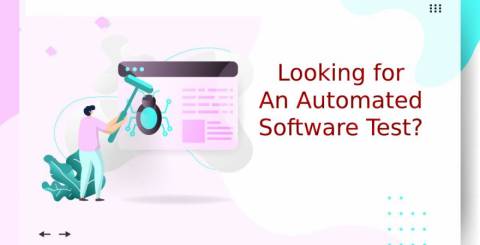Looking for an Automated Software Test? Here's What You Will Need

In terms of objectives, processes, and implementation, automated software testing can take on a range of shapes. But the main point is that automated tests are software modules that allow for the checking of the behavior of the program under review for conformity with requirements or provide enough information to do so.
The essential issue is that automatic verification is precisely the same program as the framework under inspection, which assures that automated checks will frequently produce implementation problems. That is because the scripts are no less subject to modifications in the program under assessment than the other software components that were affected throughout the alterations, it is vital to evaluate its dependability regularly or at the very least give some methods of monitoring.
Which Is the Best Way to Test Automated Tests?
What are the best ways to put this into practice? It's a smart idea to put it in place when the project is already in progress. TDD may be used to monitor the consistency of generated components in the production of helper classes for automatic tests, for example. This will allow the creation of a series of tests that can be performed directly before the main automated tests begin. This is the automated solution's unit-testing phase.
You may construct a different test (or set) for window artefacts that concentrates focuses primarily on navigation (one of the most important parts for the stability of automated tests). In addition, make sure that the desired windows are accessible during the experiments. Then you should double-check if all of the window's declared elements are current. Furthermore, it is accomplished steadily, with growing window definitions.
Test automation program has become accessible digitally for excellent testing groups or testers to assist in the automation of assessments through the usage of point and click actions. Some don't need users to create their scripts or run cross-browser experiments. The software's usability and performance can be quickly checked using automatic testing methods.
You can log and create customized experiments if you're a software developer. You may also evaluate web applications written in MVC, Silverlight, and AJAX, among other technologies. Functional assessments may be translated into unit tests, and consumers are often supported as they need assistance.
You will learn a lot from successful automated testing tools as a team leader of software projects by picking a tester with a low entry cost but a large lifetime value. Productivity improvements can be important, and it may be especially beneficial if the software does not need you to learn how to create automated testing code. There are a diversity of testing techniques available that enable you to create a test, so even though you are a novice, you can quickly check the reliability of the program that your team is scrutinizing. When you have strong test automation tools, you will also profit from increased cooperation.
The program you've created should be built in such a way that it's easy to maintain. There may be occasions when you compose short scripts that either employ record and playback techniques or have been put together with speed as the primary priority rather than quality. Since you did not employ the consistency strategy in this example, you do not need to automate. Make certain you're prepared for the procedure ahead of time.
Putting a Test Automation Strategy in Place
As part of their agile transition, several teams have used a pyramid testing method. Three different levels of test automation are required in the test automation pyramid methodology. The bottom of the test automation pyramid is unit research, which accounts for the majority of it. The next level is the service layer, which is often known as API testing. Last but not least, GUI inspections are prioritized on the first list.
Automated Testing: A Beginner's Guide
Test automation will simplify certain routine yet required activities in an already established formalized testing procedure, as well as to conduct extra research that would be challenging to conduct personally. To keep up with an ever-industry situation and rivalry, businesses around sectors keep demanding quicker launches and better applications.
Software monitoring is an essential aspect of the DevOps and system senses creation methods used by businesses. With industry 4.0 in operation, the previous manual testing approach is no longer adequate for today's wired devices and complex technological frameworks.
Similar Articles
With the advancement of technology, goods are now being produced at an enormous rate and in diverse regions throughout the globe, which has transformed industries.
Discover how industrial printer ink differs from regular ink—durability, high-volume performance, and cost-efficiency for B2B printing needs.
Atomic Absorption Spectroscopy (AAS) is applied in fields like healthcare, food safety, and pharmaceuticals.
Modern businesses have come to rely on technological infrastructure, and quite heavily at that, no? Everyone can see the growing dependence of all industries on digital solutions to go about their operations. However, the complexity of modern business is beginning to necessitate the kind of technological solutions that can scale with changing requirements
Digital technologies and the transformation they have brought about have fundamentally altered how businesses operate. This has resulted in an increase in data generation and the adoption of various software, among other things
Users today are pickier than ever. They want their needs met with a few clicks or taps on the screen. Failure to meet their needs results in site abandonment, which is not a positive sign for a business aiming to be successful. The traditional way of information sharing through websites requires a reload for every action a user performs.
The demand for innovation is immense, isn't it? Then there is also the need to adapt to rapidly changing market demands. Phew! Businesses have so much to deal with, especially the seemingly unending challenge of maintaining IT infrastructure.
User experience (UX) is a crucial part of any digital product. A smooth and enjoyable user experience keeps customers engaged. Businesses are now investing in UX consulting services to stay ahead of the competition.
Industries that deal with nuclear energy must be cautious. They need to inspect their equipment often to prevent accidents. Traditional inspection methods can be slow and risky for workers









